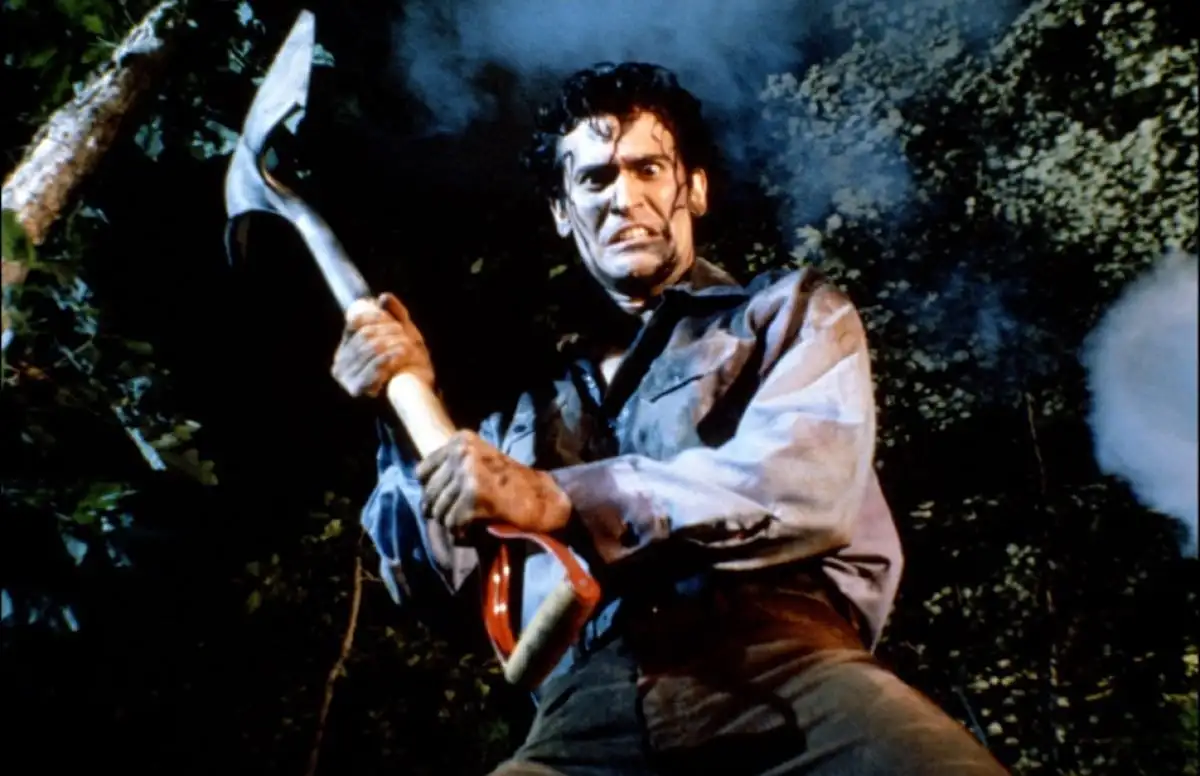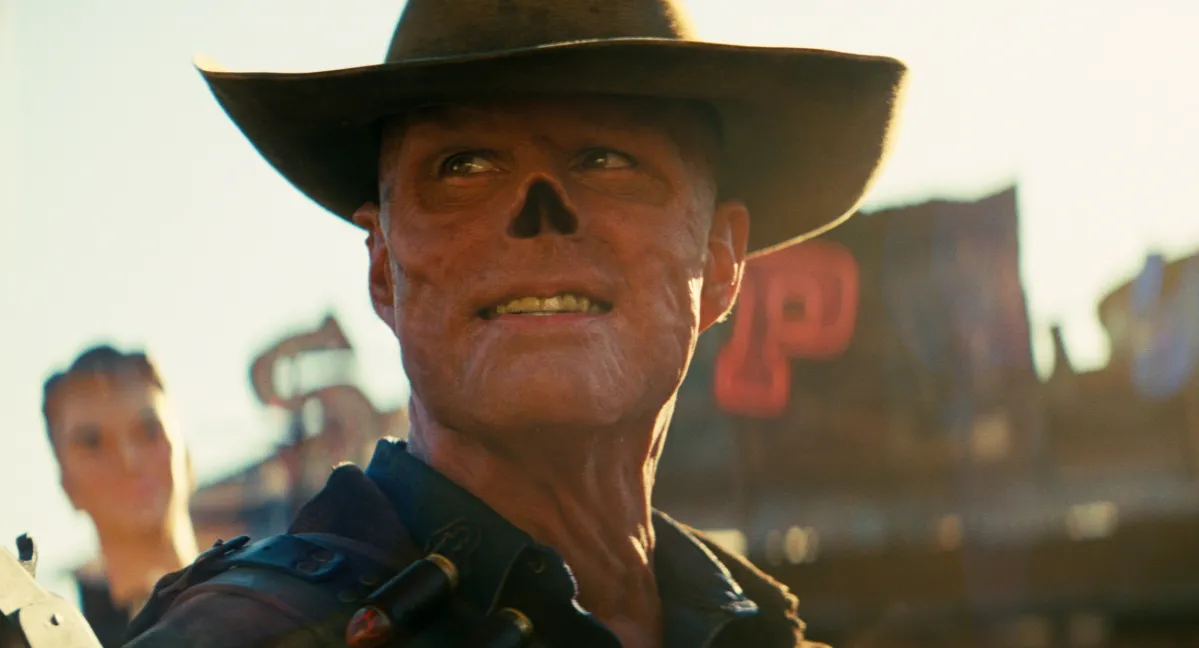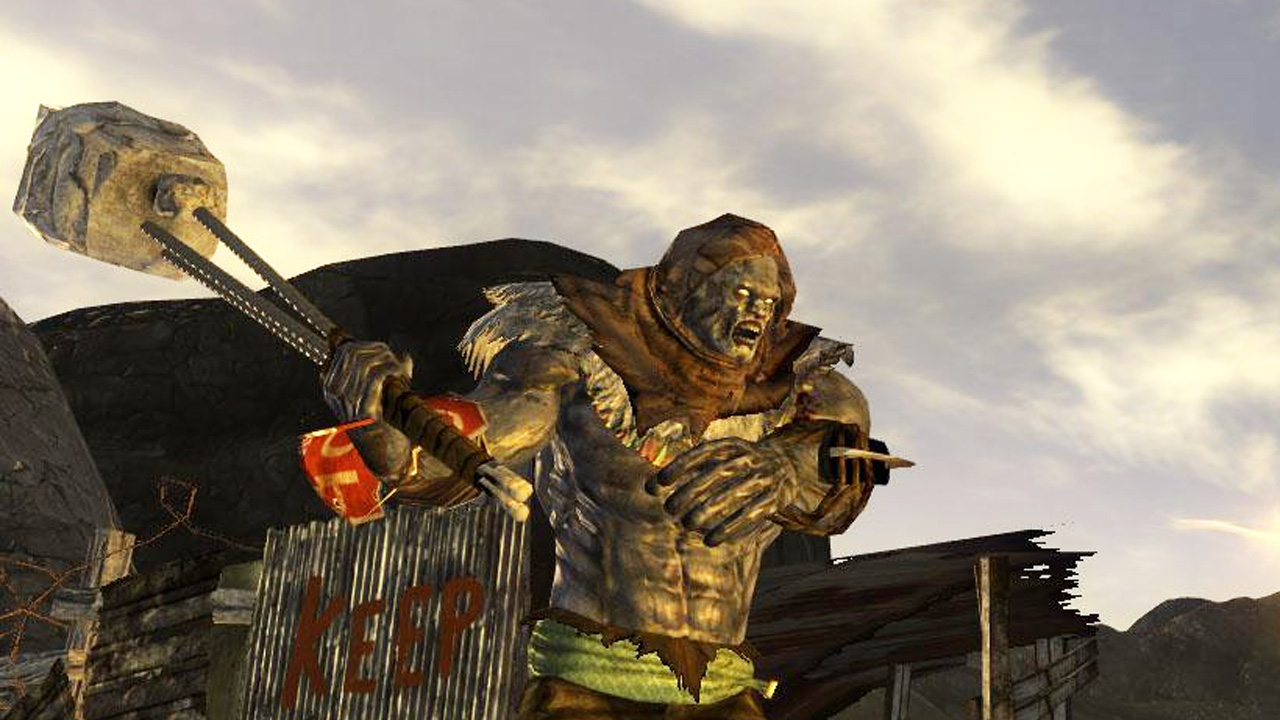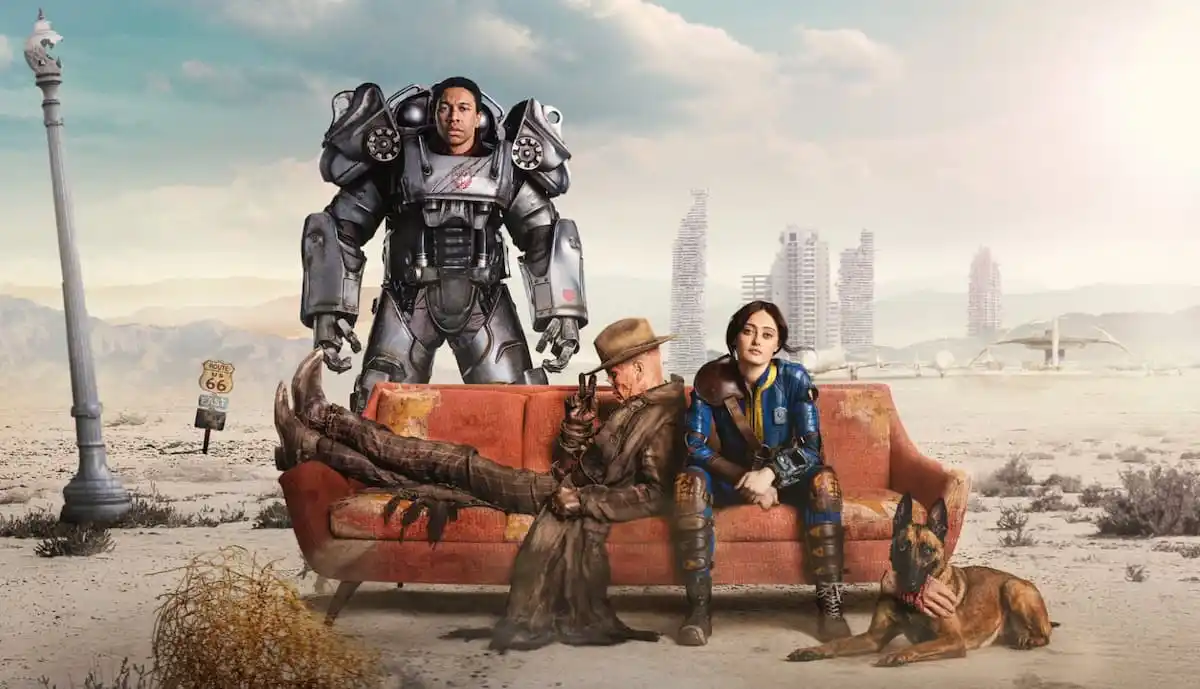With the release of the Evil Dead video game, and with the looming release of Lee Cronin’s Evil Dead Rise, it seems as good an opportunity as ever to take a look back at Sam Raimi’s original trilogy.
On the surface, The Evil Dead is a fairly conventional horror movie. It is the story about a bunch of teenagers who travel to a remote cabin in the woods and are brutally assailed by monstrous forces. It is an archetypal horror narrative, the kind of plot spoofed in affectionate pastiches like Cabin in the Woods or Tucker & Dale vs. Evil. On paper, it is largely indistinct from many of the similar backwoods horrors of the era, from Deliverance to Friday the 13th.
There was something opportunistic in Raimi and his collaborators choosing to make a horror film; their earlier efforts had tended towards comedy. However, as Raimi’s friend and lead actor Bruce Campbell reasoned, “a failed comedy will make less money than a failed horror movie.” This comedic sensibility would bleed through into the finished film, with Raimi himself arguing that it was “The Three Stooges with blood and guts for custard pies.”
However, despite (or perhaps even because of) the fact that Raimi seemed to end up making a horror film entirely by accident, The Evil Dead is a fascinating study of the genre. It is a movie that plays very much with the tropes and conventions of the horror movie in interesting ways, in turn playing cannily with the audience’s expectations of a film like this. While these elements of the film are likely happy coincidences or the result of a playful sensibility, they’ve helped the film age well.
There is a self-awareness to The Evil Dead, even before the sequels lean into the cartoonishness of the premise. Raimi and his team are aware of the derivative nature of the horror that they are staging. Like many of these sorts of horror movies, the teenagers at the heart of The Evil Dead transgress. They unleash the evil that eventually consumes them. This is standard horror movie stuff. However, there’s a deliberate reflexivity to what happens in that cabin in the woods.

The teenagers are not the first victims of the Deadites. They arrive after the monsters have already consumed Professor Knowby (Bob Dorian). Even within the world of the film, Raimi seems to concede that the premise is far from original. The teenagers do not unleash the ancient evil by reading aloud from the Necronomicon. They instead summon these malicious spirits by replaying a tape recording of Knowby reading the incantation. It is effectively a repeat.
There’s a level of postmodernism at play here, where the image of an object seems to become an object itself. The recording of a summoning serves as a summoning itself, even though the words are not spoken anew. A tape recorder can prove just as dangerous as a book bound in human flesh and written in blood. There is a sense in which Raimi is playing with the logic of the horror movie, in particular the moral panic that was creeping into popular culture about these movies.
After all, The Evil Dead was released as home media was taking off. VHS launched in 1976, and Magnetic Video began releasing theatrical movies on the format the following year. The revolution had begun, even if it wouldn’t complete for another few years. By 1986, a video cassette player would be “a household appliance as common as a toaster.” Although it seems unlikely that Raimi could have imagined it at the time, home media would become a huge part of the film’s success.
The Evil Dead would become a cult phenomenon in the United Kingdom, where it became the centerpiece of the so-called “video nasty” scandal, alleging that young viewers were being corrupted by schlocky horror movies. In its own way, every copy of The Evil Dead became a cursed text itself, like that recording of Knowby reading from the Necronomicon. It didn’t hurt the film. “The publicity sent it to number one,” recalls Campbell. “It was the biggest video of the year.”

There were other ways in which The Evil Dead felt self-aware of what it was and how that intersected with the audience’s expectations of it. One of the most distinctive aspects of Sam Raimi’s visual storytelling is the way that he moves the camera. Throughout his career, Raimi has been both praised and criticized for his dynamic camera movements: the dollies, the whips, the pans, the zooms, the pushes, the pulls, the tilts, the whirls. That is obvious as early as The Evil Dead.
Raimi frequently uses this camera trick to put the audience in the head of an antagonistic force. It doesn’t have to be an individual. To pick a small example from Raimi’s most recent film, there’s a moment in an otherwise generic fight sequence in Doctor Strange in the Multiverse of Madness between Baron Mordo (Chiwetel Ejiofor) and Stephen Strange (Benedict Cumberbatch), where the camera is placed in the perspective of Mordo’s foot as it swings towards Strange’s face.
In the Evil Dead movies, Raimi often uses the camera to place the audience in the perspective of the Deadites as they chase their prey through the woods. This is undoubtedly a budget-saving measure, allowing Raimi to avoid showing the monsters. However, it also means that the audience is watching the horror movie not from the perspective of the characters being tormented, but from the creatures that are doing the tormenting.
This simple directorial choice reflects a deep understanding of the audience’s relationship to the film. As much later movies referencing The Evil Dead, like Cabin in the Woods, would acknowledge, the audience for these movies wants to torture the characters. The audience is watching these movies with the expectation that the characters will suffer. The camera is ultimately an instrument of torture, like placing an ant under a magnifying glass.

In a very real sense, the audience is the monster in The Evil Dead. The film doesn’t seem to follow a particularly rigorous internal logic. The rules of infection are elastic at best, with the Deadites seeming to operate largely on the logic of whatever is most unsettling in a given moment. More than that, the Deadites seem to toy with their victims largely for the sake of it and for their own amusement. They are not trying to take over the world. They don’t seem in a rush to kill.
In traditional horror movies, the camera often feels like a voyeur, watching and observing the horror as it peers through windows and doors. In Sam Raimi’s world, the camera is a physical object that moves with real physical force. In the final shot of The Evil Dead, the camera opens one door and smashes through another. Raimi even spread rumors about how he’d broken Campbell’s jaw by running into him with a camera. It is not true, but it is believable.
The Evil Dead plays with at least one more central horror movie trope. The horror genre is largely defined by the convention of “the final girl,” the female character who survives the movie’s trauma. Although that archetype wasn’t named at the time that Raimi was working on The Evil Dead, it was still widespread within the genre, with obvious examples like Sally Hardesty (Marilyn Burns) from The Texas Chain Saw Massacre or Laurie Strode (Jamie Lee Curtis) from Halloween.
The Evil Dead doesn’t have a final girl. Cheryl Williams (Ellen Sandweiss) is a victim of sexualized violence, the infamous “tree rape” sequence that Raimi has since acknowledged as “unnecessarily gratuitous and a little too brutal.” Cheryl is the first of the group to turn. Shelly (Theresa Tilly) is also converted quite early on and is killed by Scott (Richard DeManincor), who is forced to dismember her. The same thing happens to Linda (Betsy Baker) and her boyfriend Ash (Campbell).

Ultimately, Ash is the only survivor of The Evil Dead, with Campbell going on to reprise the role across two sequels, a spin-off television series, and other multimedia tie-ins. Of course, this makes sense. Campbell was Raimi’s old school friend and a key creative collaborator across Raimi’s filmography. Given that Campbell was willing to submit himself to whatever Raimi demanded, it was only reasonable that Raimi should position him at the center of the movie.
Still, Ash is notable as one of the relatively rare “final boys” in mainstream horror. There’s an added layer of irony here, given that Ashley would become more common as a girl’s name in the years that followed The Evil Dead, likely prompted by the popularity of the character Ashley Abbott (Eileen Davidson) who arrived on The Young and the Restless in 1982. By the time of Ash’s third appearance, in Army of Darkness in 1992, Ashley was the most popular girl’s name in America.
Even today, there is something striking about an otherwise conventional teen horror movie that offers a “final boy” rather than a “final girl.” The gendered expectations of the genre are so strong that even Fede Álvarez’s remake features Jane Levy as the final girl Mia. Still, a horror victimizing a male character in the way that the genre has long victimized female characters is refreshing, and it avoids a lot of the complicated debates about voyeurism and exploitation within the genre.
The Evil Dead is the result of a talented young filmmaker and his friends sneaking off into the woods to make an archetypal exploitation film. It’s fun and thrilling, and it knows exactly what the audience wants from it. However, it has endured because it approaches that familiar template with rare insight and ingenuity.





